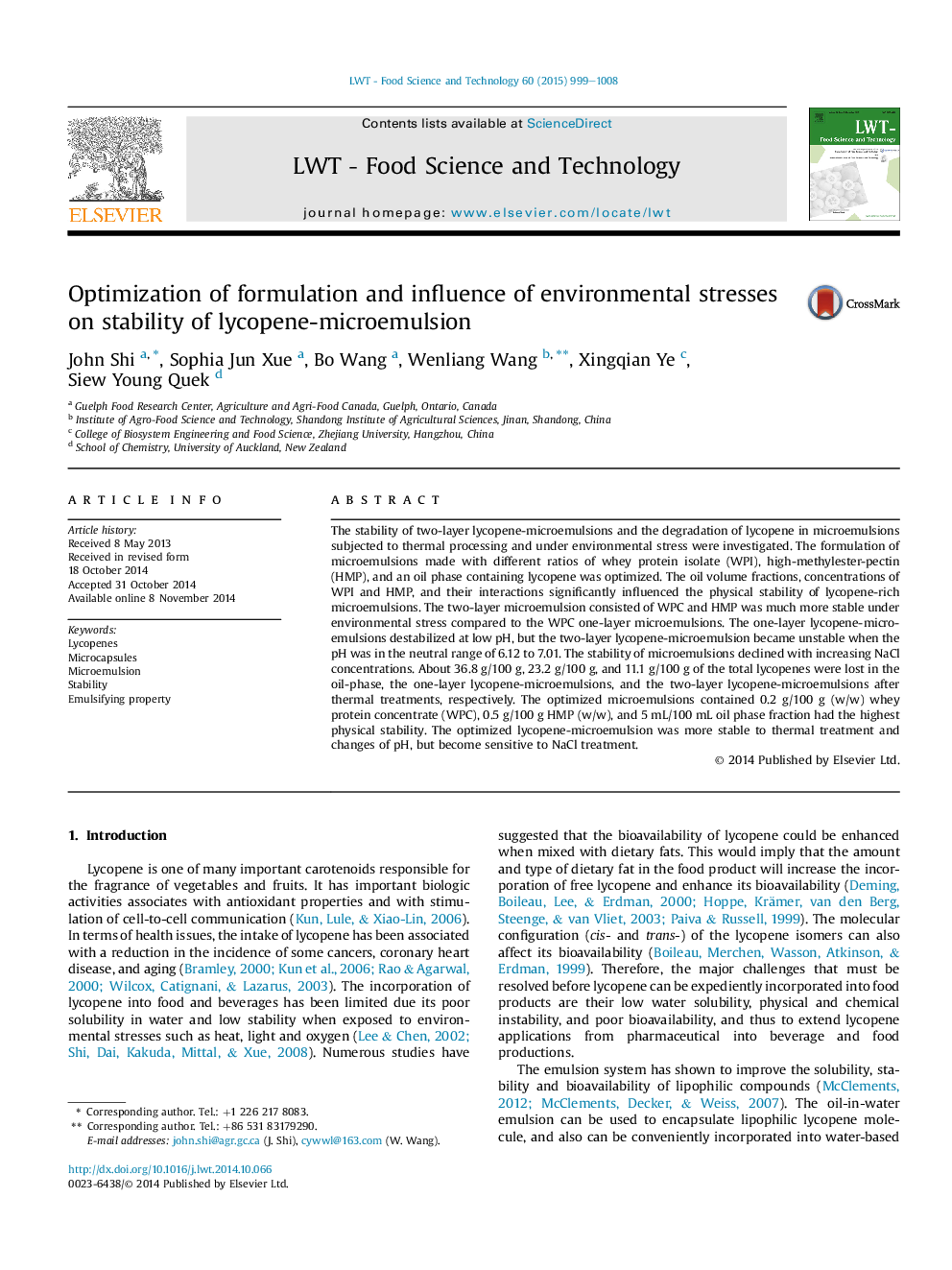| Article ID | Journal | Published Year | Pages | File Type |
|---|---|---|---|---|
| 6402504 | LWT - Food Science and Technology | 2015 | 10 Pages |
â¢lycopene- microemulsions contained 0.2% WPC, 0.5% HMP, and 5% oil phase exhibited highest physical stability.â¢The double-layers of WPC and HMP lycopene-microemulsion against environmental stress.â¢Lycopene bio-degradation highly depended on physical stability of microemulsion.
The stability of two-layer lycopene-microemulsions and the degradation of lycopene in microemulsions subjected to thermal processing and under environmental stress were investigated. The formulation of microemulsions made with different ratios of whey protein isolate (WPI), high-methylester-pectin (HMP), and an oil phase containing lycopene was optimized. The oil volume fractions, concentrations of WPI and HMP, and their interactions significantly influenced the physical stability of lycopene-rich microemulsions. The two-layer microemulsion consisted of WPC and HMP was much more stable under environmental stress compared to the WPC one-layer microemulsions. The one-layer lycopene-microemulsions destabilized at low pH, but the two-layer lycopene-microemulsion became unstable when the pH was in the neutral range of 6.12 to 7.01. The stability of microemulsions declined with increasing NaCl concentrations. About 36.8 g/100 g, 23.2 g/100 g, and 11.1 g/100 g of the total lycopenes were lost in the oil-phase, the one-layer lycopene-microemulsions, and the two-layer lycopene-microemulsions after thermal treatments, respectively. The optimized microemulsions contained 0.2 g/100 g (w/w) whey protein concentrate (WPC), 0.5 g/100 g HMP (w/w), and 5 mL/100 mL oil phase fraction had the highest physical stability. The optimized lycopene-microemulsion was more stable to thermal treatment and changes of pH, but become sensitive to NaCl treatment.
